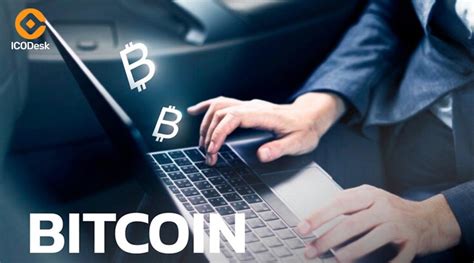How to Mine Bitcoin: A Comprehensive Guide for Beginners

`markdown
Preview: Interested in joining the Bitcoin revolution? This comprehensive guide breaks down how to mine Bitcoin, even if you're a complete beginner. From understanding the technology to selecting the right hardware, we'll cover everything you need to know to get started with how to mine Bitcoin. Let's dive in!
Understanding Bitcoin Mining
Bitcoin mining is the process of verifying and adding new transaction records to the Bitcoin blockchain. Miners use powerful computers to solve complex cryptographic puzzles. The first miner to solve the puzzle gets to add the next block of transactions to the blockchain and is rewarded with newly minted Bitcoin. How to mine Bitcoin successfully requires significant computational power and energy.
Why Mine Bitcoin?
While challenging, mining Bitcoin can be profitable. Here are a few reasons why people choose to mine:
- Earning Bitcoin: The primary incentive is to earn new Bitcoin.
- Supporting the Network: Mining helps secure the Bitcoin network by verifying transactions.
- Potential for Profit: If mining costs are lower than the value of the Bitcoin earned, it can be a profitable venture.
- Blockchain: The distributed ledger that records all Bitcoin transactions.
- Hashing: The cryptographic function used to secure the blockchain.
- Proof-of-Work (PoW): The consensus mechanism used by Bitcoin to validate transactions.
- Antminer S19 Pro: A powerful and popular option.
- Whatsminer M30S++: Known for its efficiency.
- Slush Pool: One of the oldest and most reputable pools.
- F2Pool: A large and well-established pool.
- Antpool: Operated by Bitmain, a major ASIC manufacturer.
- Hardware Wallets: Provide the best security (e.g., Ledger, Trezor).
- Software Wallets: Offer convenience but are less secure (e.g., Electrum, Exodus).
- Exchange Wallets: Convenient for trading but riskier (e.g., Coinbase, Binance).
- CGMiner: A widely used and versatile option.
- BFGMiner: Another popular choice with advanced features.
- Electricity Costs: The biggest expense for most miners.
- Hardware Costs: The initial investment in your mining equipment.
- Bitcoin Price: The value of Bitcoin directly impacts your earnings.
- Mining Difficulty: The higher the difficulty, the more computing power is required to solve a block.
- Electricity Costs: Electricity is a significant expense. Choose a location with low electricity rates.
- Heat and Noise: ASIC miners generate a lot of heat and noise. Ensure you have adequate cooling and soundproofing.
- Regulations: Be aware of local regulations regarding Bitcoin mining.
- Maintenance: ASIC miners require regular maintenance to ensure optimal performance.
- Renewable Energy: Increasing use of renewable energy sources to reduce the environmental impact of mining.
- ASIC Development: Continuous improvements in ASIC technology to increase efficiency and hashrate.
- Mining Farms: Large-scale mining operations with hundreds or thousands of ASIC miners.
How to Mine Bitcoin: A Step-by-Step Guide
Here’s a detailed guide on how to mine Bitcoin.
1. Understanding the Basics
Before diving in, understand key concepts like:
2. Choosing Your Mining Hardware
The most common method for how to mine Bitcoin involves using specialized hardware called ASICs (Application-Specific Integrated Circuits). These machines are designed specifically for mining Bitcoin and are far more efficient than traditional CPUs or GPUs. Some popular ASIC miners include:
Consider factors like hashrate, power consumption, and price when choosing your hardware.
3. Joining a Mining Pool
Due to the increasing difficulty of Bitcoin mining, solo mining is rarely profitable. Joining a mining pool increases your chances of earning rewards. Mining pools combine the computational power of multiple miners, increasing their chances of solving a block. Rewards are then distributed proportionally based on the amount of computing power contributed. This method is popular for those learning how to mine Bitcoin because it provides more consistent payouts. Some popular mining pools include:
4. Setting Up Your Bitcoin Wallet
You'll need a Bitcoin wallet to receive your mining rewards. There are several types of wallets to choose from, including:
5. Installing and Configuring Mining Software
Once you have your hardware and wallet, you'll need to install and configure mining software. This software connects your hardware to the Bitcoin network and the mining pool. Popular software options include:
Follow the instructions provided by your mining pool to configure the software correctly. You'll typically need to enter your pool URL, username, and worker name.
6. Running and Monitoring Your Mining Operation
Once everything is set up, you can start mining! Monitor your hardware's performance regularly to ensure it's running efficiently and troubleshoot any issues. Keep an eye on your electricity consumption, as this will significantly impact your profitability. Understanding how to mine Bitcoin involves a constant learning curve.
7. Calculating Profitability
Mining Bitcoin is a business, so it's important to calculate your profitability. Consider factors like:
Use online calculators to estimate your potential profits.
Key Considerations for Mining Bitcoin
The Future of Bitcoin Mining
Bitcoin mining continues to evolve. Trends include:
Understanding these trends is crucial for anyone looking at how to mine Bitcoin long term.
Conclusion
Learning how to mine Bitcoin can be a rewarding experience, but it requires dedication, research, and a willingness to learn. By understanding the basics, choosing the right hardware, joining a mining pool, and monitoring your operation, you can increase your chances of success. Good luck!
Frequently Asked Questions (FAQ)
Q: What is the best hardware for mining Bitcoin?
A: ASIC miners, such as the Antminer S19 Pro and Whatsminer M30S++, are the most efficient hardware for mining Bitcoin.
Q: How much does it cost to start mining Bitcoin?
A: The cost can vary greatly depending on the hardware you choose and your electricity rates. ASIC miners can range from a few hundred to several thousand dollars.
Q: Is it still profitable to mine Bitcoin?
A: Profitability depends on factors like electricity costs, Bitcoin price, and mining difficulty. It's crucial to calculate your potential profits before investing.
Q: What is a Bitcoin mining pool?
A: A mining pool combines the computational power of multiple miners to increase the chances of solving a block and earning rewards.
Q: Is it legal to mine Bitcoin?
A: Bitcoin mining is legal in most countries, but it's essential to be aware of local regulations.
Q: How much Bitcoin can I earn from mining?
A: Earnings depend on your hashrate, the mining pool you join, and the current block reward.
`





